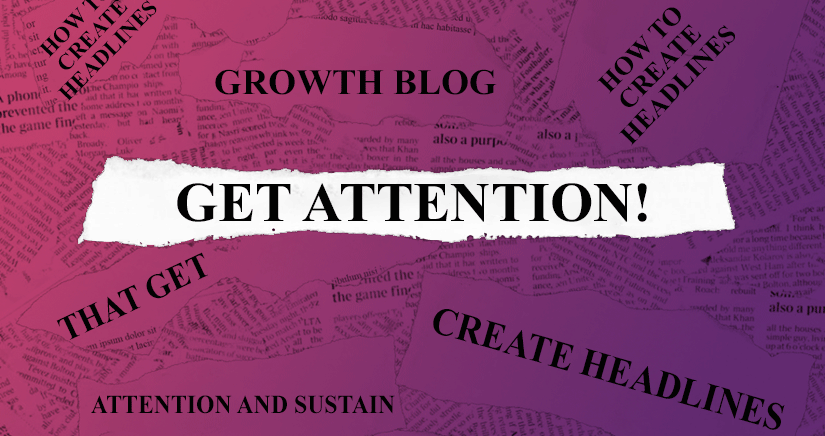Headlines, or titles, as they are also called, are the most important part of your article.
The headline is what people see first.
It doesn’t matter how good or bad an article is, if the headline is weak, it won’t get read.
Misleading headlines can lead people astray.
Bad headlines can make bad memories.
Headlines serve as first impressions to people. It’s what they see first.
“Air pollution now leading cause of lung cancer,” ran a headline in the U.K. paper DailyExpress.
The article, however, said no such thing, or, rather, not exactly.
Instead, it reported that pollution was a leading “environmental” cause.
Other causes, like smoking, are still the main culprits.
It is easy to understand a decision to run that sort of opening.
Caveats don’t fit in single columns, and, once people are intrigued enough to read the story, they’ll get to the nuances just the same.
But, as it turns out, reading the piece may not be enough to correct the headline’s misdirection.
Here’s the fact:
If the headline is misleading, people will stop at the point they realize it is.
They will feel deceived and may never return to your site.
When they come across your site on search engines, they will ignore it.
I’m sure you want to avoid that.
The job of your headline is to attract people to your article.
But it should not only draw readers in. It should also keep them on the page. That’s what good headlines do.
In this article, let’s talk about how to write headlines so captivating that they will not only bring in readers, but they will keep them reading too.
How is that possible?
Continue reading to find out.
Promise A Solution
People are not on your website to read.
They are there to find a solution to their problem.
They want something.
What is that thing?
As Harvard Business School professor Theodore Levitt puts it:
“People don’t want to buy a quarter-inch drill. They want a quarter-inch hole!”
It’s the truth.
People often do things because they find themselves with a problem they would like to solve.
Problems like saving money, earning more money, or quitting that boring 9 – 5 job
When people struggle to find solutions to their problems, they turn to the internet. That is when you see them on Google.
They start entering all sorts of phrases that seek solutions to their problems.
For example, Movexa is a joint-support supplement manufactured by Vitamin Boat Corp.
The company has a wide range of natural supplements online that are also made available in various stores across the USA and Canada.
So the company decided to a/b test their product page.
Just by adding the word “supplement” to their headline, sales improved by 89% for Movexa.
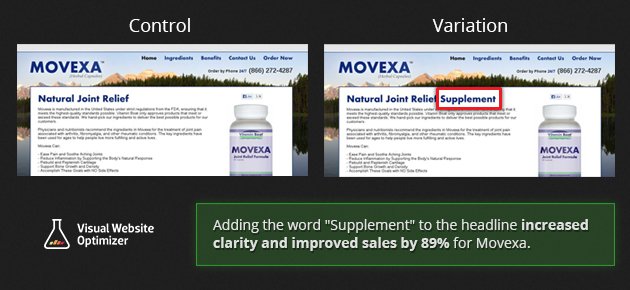
With the word “supplement” visitors know that they are getting a solution to their problem.
Think about the biggest problem your article can help solve.
Use your headline to convey your article as the solution to the problem.
That’s it. You will have a headline people can’t wait to click.
Use the Word “Free”
Neoclassical economics assumes that we are rational.
When given the option to get something for free and its cost is zero, some fairly wild consumer behavior takes place.
Some time ago, Amazon brought the free shipping idea to Europe.
By mistake, though, the price in France was reduced to 1 franc (equivalent to 10 cents) instead of to zero.
While the European countries with free shipping saw a dramatic rise in total orders, not much change occurred in France. Even though they only had to pay an incredibly small amount.
What’s the big deal with 10 more cents?
Isn’t the difference so small that it shouldn’t matter?
Yet, according to a study by psychologist Dan Ariely, the appeal of “FREE!” is huge:
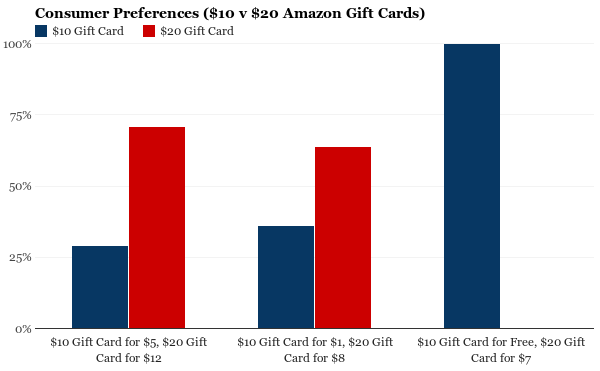
We like free things.
Even when the actual price could be as low as $1, yet we would still jump at it when it’s offered for free.
The option of paying nothing affects our decision making.
Here’s another example involving a survey of people in line for free tattoos at a New York City nightclub:
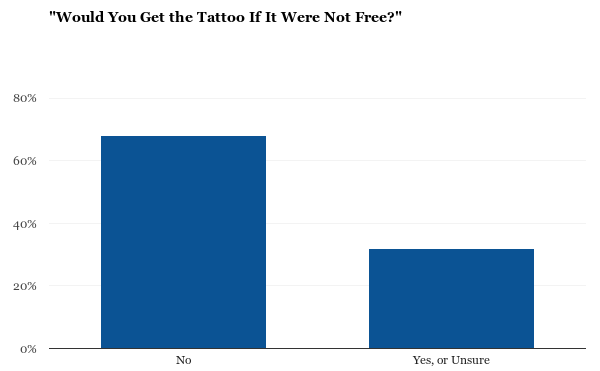
68% of respondents said they wouldn’t be getting the tattoo if they had to pay for it. Yet they found themselves in line for some permanent body ink because it was free.
You can’t blame people for wanting free things. It makes sense.
Including the word “FREE” in your headline will boost traffic.
It doesn’t matter how small the thing you are giving away for free may be. People will still click to get it. Even, if they have no need for it.
Think of small bonuses you can include in your article and put that in your headline.
Your Headline Should Create a Comparison
Ever wonder why people always seem to compare people?
Compare who’s prettier, compare who’s better or what’s better, or themselves with others?
For example, if you’re presented with two things.
You’ll want to know which one is better and offers the most benefits. It’s right to compare.
We always want the best.
There’s nothing wrong about that. It’s normal to want the best.
Try including comparison to your headline.
You may not be able to do this in every headline you write. Use it whenever you have the opportunity to use it.
Maybe you have a product, why not compare it to your competitors, and use that in your headline?
Trust me, it works.
Here’s what Neil Patel has to say about using the comparison headline:
“We used this tactic with KISSmetrics to boost our conversion rate by 40%. We related our product to Google Analytics, a product with which all of our potential customers are very familiar.
By comparing ourselves to a product our potential customers use, we helped them figure out what we do within seconds. This is the main reason our conversion rate increased.”
Think about a giant, well-known competitor you can compare your product to.
Make Your Headline Match Your Advertising
I see many people make this mistake with PPC.
Their ad copy talks about something, and the headline of their landing page talks about another.
It’s a poor way to market on the web.
No matter how powerful your headline may be, if it does not match the promise made to visitors before they visited, they simply won’t convert.
Your headline should not deceive potential visitors. They know when you try to deceive them. They may never return to your website when you do that.
You risk your reputation when you use the wrong headlines.
Your headline should be related to your ad.
For example, enter the phrase “eye surgery cost” into the Google search engine and I came across this ad:
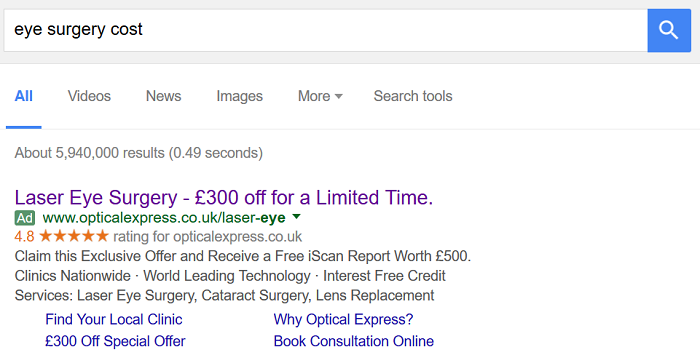
Here’s the landing page:
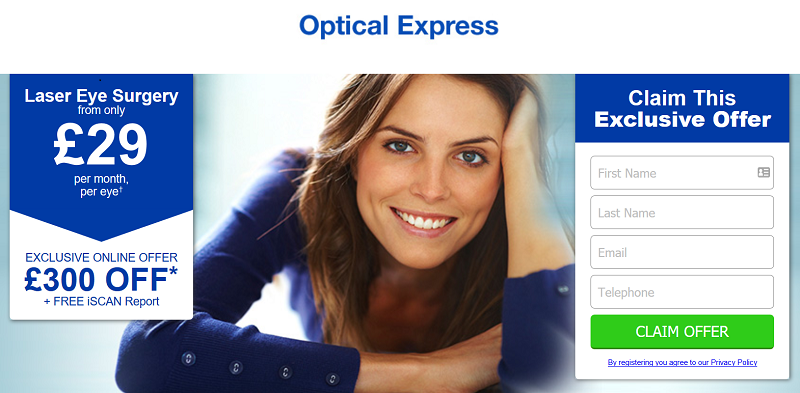
See how the headline matches the ad copy. That’s exactly what I’m talking about.
Write Testimonial Headlines
Trust is a big issue when marketing on the web.
If people don’t trust you, they won’t buy from you. It’s simple as ABC.
When people come across your website, they are hesitant to trust you right away.
To prove to them that you know what you’re talking about, you need testimonials from customers and followers of your blog.
By using testimonials, you show people how others have greatly benefited from your product or service.
Codecademy used a testimonial headline in the below YouTube video screenshot. Who wouldn’t want to watch this
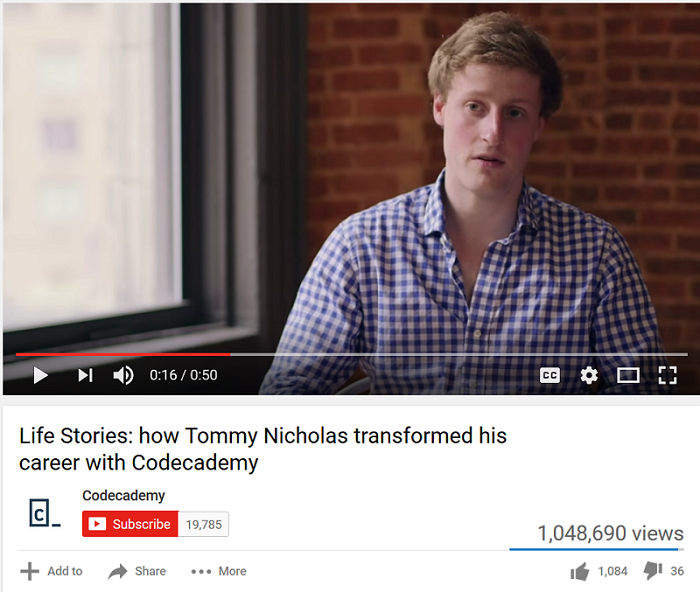
The job of a headline is to gain someone’s attention to learn more. The testimonial headline does just that.
Create Curiosity with Your Headline
There’s a psychological phenomenon you can use effectively called the curiosity gap.
The curiosity gap is the gap between something a person knows and something he or she wants to know.
People start to feel a kind of deprivation when they notice a gap in their knowledge.
It’s possible to provoke that feeling by providing just a bit of information.
Once a person knows a little, they will want to find out more and fill in the missing information so they can feel better.
With this in mind, try to “prime the pump” by giving readers some intriguing (though incomplete) information in your headline, telling them enough to spark their curiosity but not so much that you give your story away.
This headline provokes a reader’s curiosity:
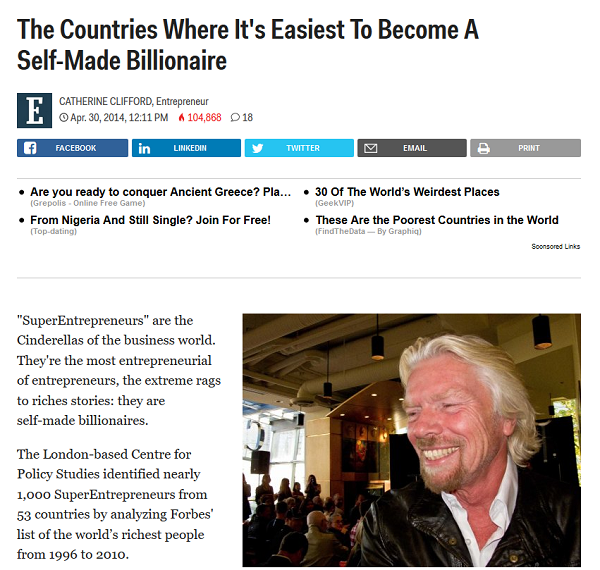
It’s worth noting that this article was first published on the Entrepreneur but it didn’t receive much attention.
The article had a very weak headline on the Entrepreneur:
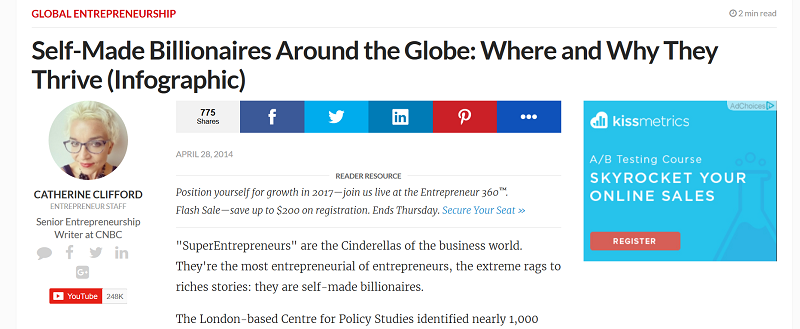
Here’s another curiosity headline from Gizmodo:
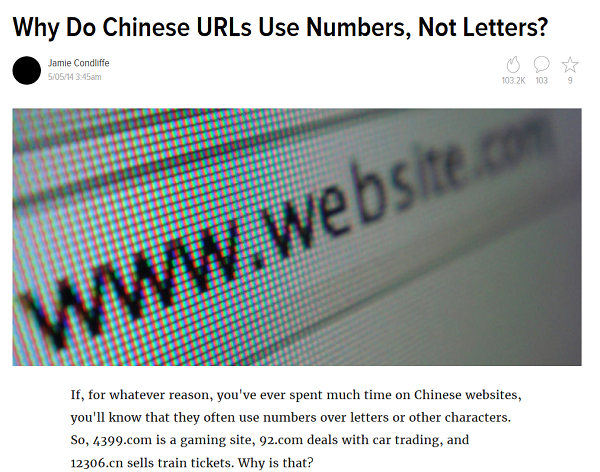
If you want your blog post to pull in a lot of traffic, you need curiosity.
You see, curiosity is an innate in humans, and every TV network, movie, blog, book, and other forms of media takes advantage of it.
Curiosity can help you build a successful blog.
Curiosity can help you build a big email list.
Curiosity can help you earn more sales.
There are 5 magic words that can add curiosity to your headline:
- How
- These
- Why
- Which
- What
These words are very powerful in creating curiosity.
Use them in your headlines.
Write Time-Based Headlines
Time-based headlines can be very powerful, especially when your target readers want to achieve a result within a certain time frame.

Imagine you’re thinking about losing some weight within a week, you’ll definitely want to read articles that promise you that.
For example, Tim Ferris published a guest post about losing 20 – 30 pounds within 5 days.
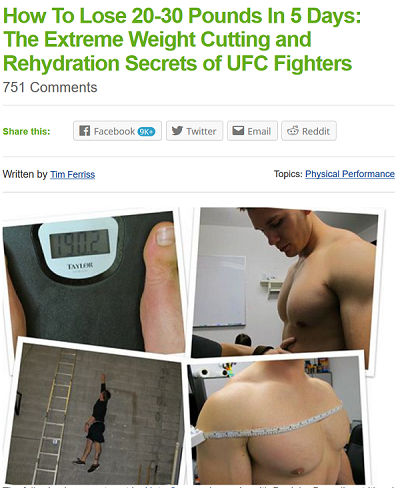
The post became an instant hit.
It has been shared on Facebook alone 9,000+ times. That’s a big number you’ll say.
People don’t want to go through a lengthy process to achieve results.
They want articles that assure them they can achieve their goals within a certain short period of time.
These people are more likely to click and read an article that tells them that in the headline. It shows you’re bold and very optimistic about the result.
Here’s an example of another time-base headline that became successful:
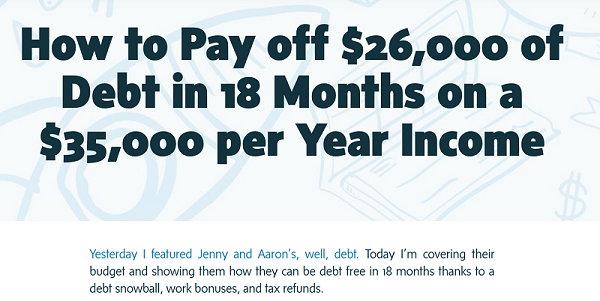
If your debt is about $26,000 and you earn around $35,000 per year, you’ll really want to know how you can get out of debt within the period promised in this article.
You’ll be compelled to click and read the article.
The headline won’t only get your attention. It will also sustain that burning desire to learn how that can be possible.
There are lots of time-based headline examples out there. I’m sure you get how and why it works.
Use Numbers In Your Headline
Many copywriters use numbers in their headlines. It’s because it works.
People are attracted to numbers. No wonder number headlines are very popular on the web.
Do an experiment:
Go to the grocery store, and scan the magazines in the checkout lane.
Look at the front-page article headlines.
It doesn’t matter if it’s a fitness magazine or a tabloid. Many of them will be using numerals to start off the headline.
BuzzSumo analyzed 100 million articles and studied why content go viral.
They found that list posts are the second most shared content only behind infographics.
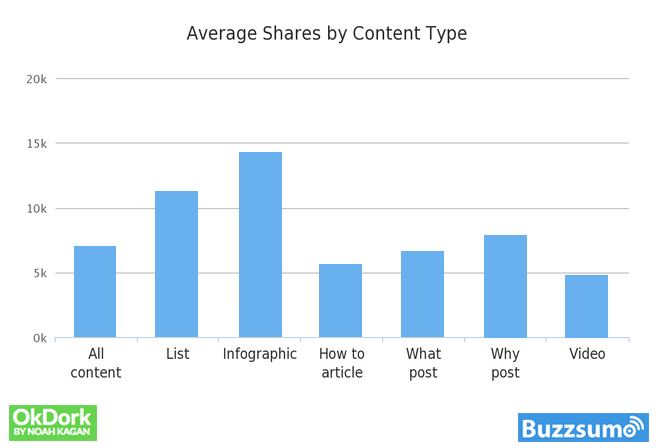
Here’s what Noah Kagan, the founder of AppSumo, has to say about the study:
“Note: All Content is the average shares of all content we analyzed, and is meant to be a benchmark.
This may be obvious to some, but list posts and infographics receive more average shares than other content types.
More surprisingly, how-to posts and videos receive less shares than the average post.
There are many possible reasons why list posts get shared the most. Lists give the readers an exact idea on what to expect (i.e. 10 ways to do something). They’re also skim-friendly and easy to read.
Similarly, infographics make it easier to digest a huge amount of information in a visually appealing way. So make sure your content has plenty of images or charts, so readers aren’t intimidated by so much text.”
List posts tell readers what to expect.
I’m a big fan of list posts because they work.
When you visit the home page of BuzzFeed, one of the most popular blogs on the web, you’ll see that they write a lot of list posts.
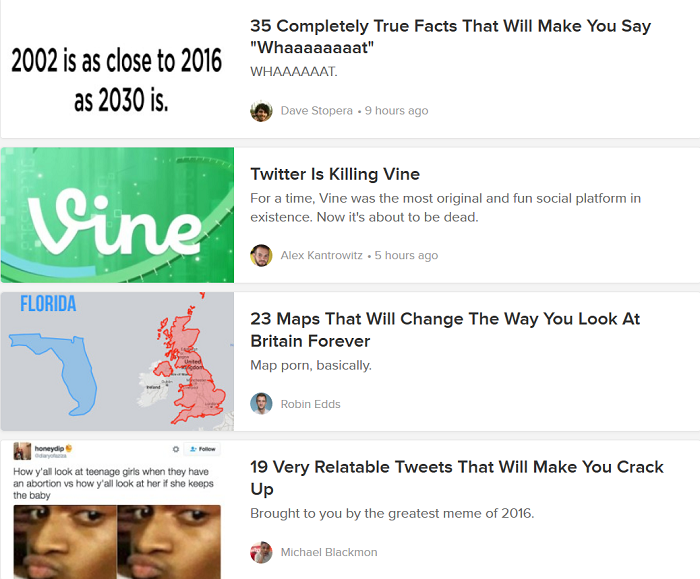
List posts have been around the web for a long time, and they are still very much effective today.
Conclusion
The process of writing a great headline that gets attention don’t have to be hard.
By doing the right things which have been outlined in this article, you’ll regularly come up with headlines web users can wait to click.
Thanks for reading and please share this post with your network on your favorite social channel.
Related articles: content marketing 2017, how to create optin page, skills for creating long-form content, make people love through content marketing
